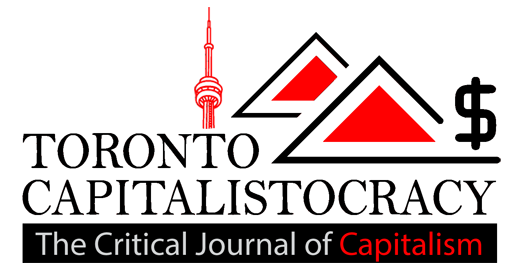Lifestyle
Why is it important to accept yourself?

Humans are unique in that we have a keen sense of belonging. But that sense of belonging, however, is hugely mismanaged to the point of not accepting who we are. We go through life hoping we can be more like someone else. And if we do not end up like that person, we become unhappy. If you want to improve your self-esteem, you must first embrace who you are as a person. It will take plenty of courage to accept yourself, just like accepting an outcome from spiny bez depozytu game. But accepting yourself is simply seeing things the way they are and stop comparing yourself with others by showering yourself with some real love and care. In this short walk, let us look at seven (7) reasons why you need to accept yourself.
- You are still being made-Don’t be hard on yourself or say terrible things because you are not perfect. Perfection does not exist. Just try to be the best person you can be.
- Your past makes you who you are. – Your mistakes do not make you who you are. Making mistakes shows that you are a person. Admit that you did something wrong, forgive yourself, learn from it, and move on.
- There is no need to treat you like a copy – Your imperfections help you to stand out in a crowd, while your trials allow you to inspire others. Accept and embrace it. Do not try to escape it.
- Your past errors are a lesson, not a death sentence – Every stage of your life teaches you something. The teachings can be found. Then, figure out how to just be the best version of yourself within this period.
- Your stress levels will be lower – You’ll also have less anxiety because you will not have to look outside yourself for happiness. If you find acceptance and contentment within yourself, you will not need to look outside of yourself for happiness anymore.
- You are more powerful than you know – During a storm, you may feel utterly drained and helpless. Recognize that you are more resilient than you believe and that whatever you are going through will be over in no time flat. You are going to be fine.
- Comparing oneself to others is a waste of time – Comparisons with others are harmful. Every aspect of your trip is custom-made for you. As a result, you will only see and hear what they need you to hear and see.
If you do not accept yourself, the following will happen:
- Insecurities – Self-esteem issues may arise if you don’t accept who you truly are.
- Keeping a false Identity – Trying to be someone you are not a surefire way to lead a fictitious life. Is your life quite different from who you are? If so, it may be time to seek help. It is time to find a solution!
- A feeling of unhappiness – Neglecting your inner guidance system, your values, and your heart’s aspirations is the result of all the above, and it prevents you from fully experiencing life.
- Being a victim – It is easy to fall prey to the negative of others if you do not accept yourself as you are.
- A lack of self-confidence – When you are unsure of the person you are or what you want, it might lead to low self-confidence. Feeling like a victim can exacerbate this situation even further.
More than anyone else, you need yourself. It does not make a difference what people say about you. But it does matter what you take in for yourself. It does not matter what they think about you. Your opinions about yourself do matter. So, make sure you have good thoughts about yourself and just be yourself.
Lifestyle
Ontario Line subway construction permanently shuts down beloved Toronto bakery

The Danforth is set to lose yet another neighbourhood favourite to the Ontario line subway construction as Greek bakery Akropolis Pastries prepares to close its doors for good after over 40 years in business.
They announced on Instagram that they’ll shut down in mid-August, sharing a painting of the storefront alongside a simple message thanking their customers.
Dozens of people took to the comments to express their love for the establishment and their years of service to the community.
“Thank you for your friendly customer service & delicious goodies. You will be missed,” said one customer.
Another added, “You always had the best akropolis pies and always great service. Good luck!”
Several more chimed in with hearts and crying emojis, as well as shout-outs to their favourite dishes.
The bakery’s president, Bill Gekas, confirmed to the Toronto Star that he received official notice that Akropolis was to be expropriated in the winter of 2022.
He says that the offer from Metrolinx, who had previously promised to compensate affected business owners accordingly, was below market value and that he planned to take the company to court.
He continued, further pressing the company for taking away affordable housing from his upstairs tenants without providing them a suitable replacement.
Akropolis isn’t the first Greektown business to announce its expropriation, with Flox on Danforth and Home Hardware the most recent neighbour to share that they’ve fallen victim to the Ontario line.
They also certainly won’t be the last, as Metrolinx has confirmed that they’ll be shuttering 13 businesses on the Danforth to make way for construction.
The forthcoming transit line is currently due to open in 2031 — although, if the Eglinton Crosstown LRT is any indication, that won’t be the case.

Lifestyle
Canada considers capping international student visas to address housing crisis

The Canadian government is considering a cap on international student visas to tackle the housing crisis.
During a press conference on Monday, Housing Minister Sean Fraser told reporters that a cap is “one of the options” Ottawa is considering to address the lack of housing amidst the “explosive growth” of temporary immigration programs like the international student program.
“The international student program has seen such growth and in such concentrated areas that it is really starting to put an unprecedented level of demand, in some instances, on the job market,” he explained.
“But given the economic conditions we’ve been living with for the past couple of years, you see it in a more pronounced way on the housing market.”
Fraser stressed that the conversation isn’t about blaming newcomers for Canada’s housing challenges.
He acknowledged that these issues have been decades in the making and have been perpetuated by previous Liberal and Conservative governments.
“[Governments] retreated heavily from making the basic investments in social housing that is now revealing itself through the market today,” said Fraser.
According to official data, as of December 2022, there were over 800,000 foreigners with active international student visas in Canada.
Fraser says that before seriously considering a cap, the government plans to work closely with Canadian universities to ensure these students have a place to live.
He adds that that includes addressing some of these institutions’ exploitation of international students.
“When you see some of these institutions that have five, six times as many students enrolled as they have spaces for them in the building, and you see them continue to pop up in plaza colleges across the country, you’ve got to start to ask yourself some pretty tough questions,” said Fraser.
According to the housing minister, the government has no immediate plans to lower the number of international student visas.
Fraser says he’ll be discussing options with Immigration Minister Marc Miller.

Lifestyle
Toronto’s financial woes could mean delay of Eglinton LRT and Ontario Line opening

Facing a budget deficit of a whopping $46.5 billion over the coming decade, the City of Toronto and Mayor Olivia Chow have got their work cut out for them in trying to reduce costs and increase revenue during what is now being called an “unprecedented financial crisis.”
Among 13 suggested courses of action that staffers put on the table during an Executive Committee meeting last week are a new municipal sales tax, an increase in land transfer taxes for multi-million dollar homes, and permitting the Toronto Parking Authority to charge higher fees for on-street parking, which is currently capped at $5 an hour.
Though these very feasible options were the most widely-reported ones, there are a few parts of the new 192-page long-term financial plan that are quite concerningly being overlooked.
As local political expert and columnist Matt Elliott noted in the latest edition of his City Hall Watcher newsletter, the City Manager and Interim Chief Financial Officer and Treasurer have made a couple of pretty bold recommendations for paths forward, taking aim at the provincial government for not allocating more funding to the city.
Further down the list, we find a few items that feel more dramatic than the aforementioned levies, including, at number 11, a push to potentially refuse to fund the operation of the Eglinton Crosstown LRT and Finch West subway lines that the city is currently on the hook to pay for.
As Elliott illuminated, the document states that “It was never foreseen that these new operating costs would begin in circumstances when the City had such limited capacity to afford them. Deferring the launch of these two transit lines could reduce the 2024 pressure by up to $106 million.”
Similarly, item 12 advises that “City Council inform the Province of Ontario that in the absence of a new funding model for transit operations in the City of Toronto… the City will pause negotiation of further funding agreements for Provincial Priority Transit Projects and any future provincial transit expansion projects.”
These priority transit projects include the Ontario Line, on which construction has already commenced, most noticeably at Queen and Yonge.
Though these are only proposed ideas for ensuring a better fiscal future at this point, we will have to see which, if any, of the recommendations leadership heeds.
Though there would be inevitable backlash to pressing pause on the decade-plus-in-the-making Eglinton Crosstown LRT or the forthcoming Ontario Line, would anyone in the city really be surprised if a major public transportation project was delayed yet again?




